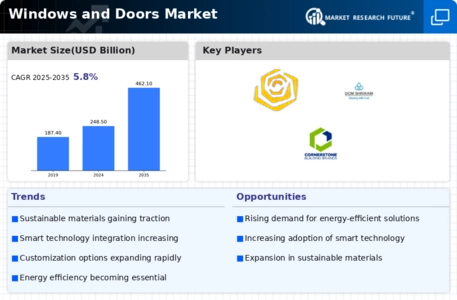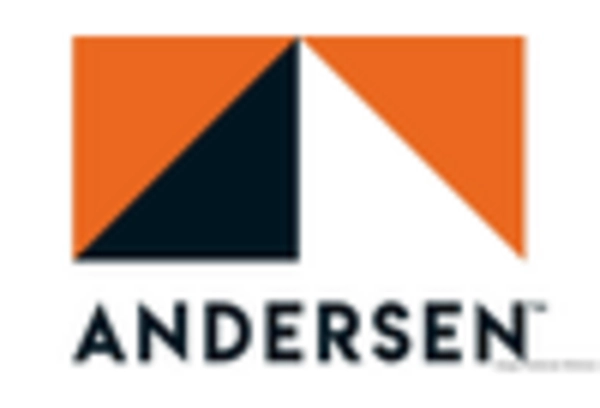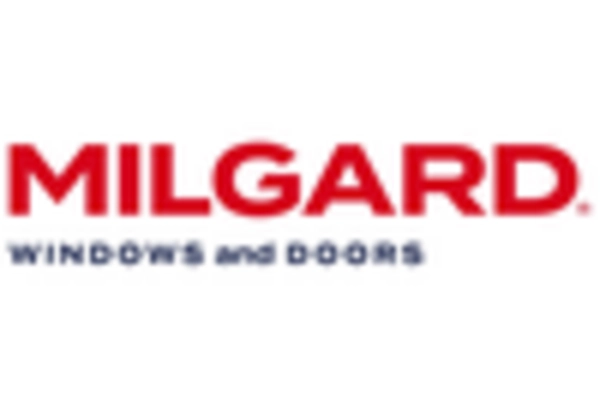Market Analysis
In-depth Analysis of Windows and Doors Market Industry Landscape
The market dynamics of the windows and doors industry are influenced by various factors that impact supply, demand, pricing, and overall competitiveness. One key aspect is the construction industry, as windows and doors are essential components of buildings. When construction activity is high, there tends to be increased demand for windows and doors, driving market growth. Conversely, during economic downturns or periods of low construction activity, the market for windows and doors may shrink.
Another significant factor is consumer preferences and trends. As with any product, consumer preferences for windows and doors can change over time due to factors such as advancements in technology, changes in architectural styles, and shifting design trends. For example, there has been a growing demand for energy-efficient windows and doors in recent years, driven by increasing awareness of environmental issues and the desire to reduce energy costs.
Competition also plays a crucial role in shaping the market dynamics of the windows and doors industry. The market is highly fragmented, with numerous manufacturers, suppliers, and distributors competing for market share. This competition can lead to price wars, innovation in product design and features, and efforts to differentiate brands through marketing and branding strategies.
Government regulations and policies also have a significant impact on the windows and doors market. Building codes and energy efficiency standards, for example, can influence the types of windows and doors that are installed in new construction and renovation projects. Additionally, government incentives and subsidies for energy-efficient products can stimulate demand for certain types of windows and doors.
The availability and cost of raw materials are another factor that can affect the dynamics of the windows and doors market. Materials such as wood, aluminum, vinyl, and fiberglass are commonly used in the manufacturing of windows and doors, and fluctuations in the prices of these materials can impact production costs and ultimately, consumer prices.
Technological advancements also play a role in shaping the market dynamics of the windows and doors industry. Innovations in manufacturing processes, materials, and design can lead to the development of new products that offer improved performance, durability, and aesthetics. For example, advancements in glass technology have led to the development of highly energy-efficient windows that can help reduce heating and cooling costs for homeowners and businesses.
Overall, the market dynamics of the windows and doors industry are influenced by a complex interplay of factors including construction activity, consumer preferences, competition, government regulations, raw material costs, and technological advancements. Understanding these dynamics is essential for companies operating in the industry to effectively navigate market trends, identify growth opportunities, and remain competitive in a rapidly evolving marketplace.

















Leave a Comment